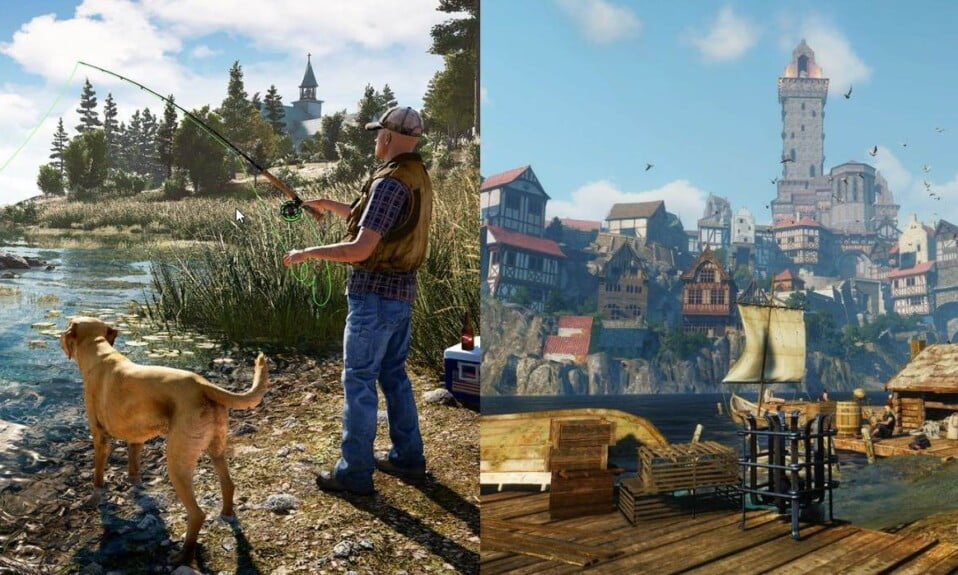You may not have ever looked into video game graphics settings if you’re new to PC gaming. Most people are aware that higher game settings are better, but what do all those options do?
We’re here to walk you through the most common graphics options in video games. We’ll look at how they operate and how they affect your computer and games.
Display Resolution
The resolution of your screen is the number of pixels present, which determines the image’s overall quality. This is usually expressed as two numbers, such as 1920×1080 (1080p) or 2560×1440 (1440p).
The first number represents the screen’s width in pixels, while the second represents its height in pixels.
You can change the default resolution settings on all monitors. You can display in resolutions lower than 1920×1080 on a 1080p monitor, but not higher.
You can change the display resolution of a game regardless of this. It’s pointless to set a game’s resolution higher than your monitor can handle because you’ll lose detail.
Because there is more graphical information per frame at higher resolutions, image quality improves noticeably. Increasing the resolution will, of course, put more strain on your GPU.
Increasing resolution is one of the simplest and most significant quality improvements you can make, so make sure you have a GPU capable of handling high resolutions before going crazy.
Below are two 200x zoomed-in images. One image was captured at 1440×900 pixels (roughly 720p), while the other was captured at 1920×1200 pixels (roughly 1080p). The hair and lines around the eyes have been given more attention.
Special methods are used in some games and software to render output at a higher resolution than is normally possible. The image below, for example, depicts Shadow of Mordor.
The game on the left has a regular 2160×1440 resolution, while the game on the right has a 5120×2880 resolution that has been downscaled to the original 2160×1440 screen. An emulator could be used to achieve this effect.
Refresh Rate
You might see another number beside your resolution when you change it in the game settings. The number of frames per second (FPS) that the game sends to your monitor is represented by this number. The refresh rate, which is measured in hertz, is the number of frames per second that your monitor can display (Hz).
The refresh rate of most standard monitors is 60Hz, which means they can draw a new image on the screen 60 times per second. It’s possible that your graphics card (and game) can send a higher frame rate than your monitor can display.
However, because a 60Hz monitor can’t display 144 frames per second, your monitor’s refresh rate effectively acts as a cap on your game FPS.
60 frames per second (FPS) is the industry standard for smooth gaming. A higher refresh rate will result in smoother images, but it will put more strain on your GPU.
If you’re not sure, use UFO Test to check your monitor’s refresh rate. If you’re not happy with your results, we’ve explained how to fix low FPS in Windows.
Depth of Field
It’s a camera lens simulation of the true depth of field, in which background objects are blurred out while the subject is in perfect focus. Many games restrict the effect to when a single object is in the foreground of your view or when you use a zoom or aim-down sights feature.
While the depth of field can be pleasing to the eye, some people will find it unnecessary or even disadvantageous, especially if the effect is overdone.
This screenshot was taken while looking through Emily’s spyglass in Dishonored 2. Although the pod is clearly the subject, the entire image is in focus on the left. The pod becomes the sole focus of the image when the depth of field is turned on in the right screenshot.
Although the depth of field is a nice touch, it isn’t always required. You should set this to your preference because it has a minor impact on performance and isn’t objectively better one way or the other.
Texture Quality
The term “texture quality” refers to how good elements of the in-game environment appear. Textures are skins that sit on top of the three-dimensional environment’s basic blocks.
The graphics quality of the game will be improved by increasing the texture quality. This can be time-consuming, as changing the texture quality affects all of the textures in the game. The end result is images that are sharper and less blurry, but at the cost of a higher load on your video card.
A photograph on the wall, for example, might appear blurry and indistinct on Low texture settings, but have enough detail to study clearly on High texture settings.
We won’t go over each quality setting individually because they all work in the same way. Shader quality, for example, controls how clear light and dark balance in the game.
The specific improvements made possible by quality bumps are difficult to pinpoint because they differ from game to game.
On levels like Low, Medium, and Ultra, you can usually adjust a single slider, or you can go into advanced settings and tweak everything individually if you prefer.
Medium settings are often a good choice for general use, as they strike a balance between an immersive landscape and playability.
Anti-Aliasing
Before going into detail about anti-aliasing (AA), it’s important to first understand what aliasing is.
Low-resolution images produce pixelated (rather than smooth) lines and curves, which is known as aliasing. This is due to the fact that rounded real-life objects are represented by square pixels.
Anti-aliasing smooths out the lines of an image by injecting blocks of the same or similar color around them. This eliminates the blocky look around the edges of your game’s items.
Anti-aliasing techniques come in a variety of flavors, and your GPU’s drivers decide which one to use. However, you can usually change the anti-aliasing quality you want in your game settings.
The GPU may be taxed in a small or large way depending on the AA methods used. If you notice jagged edges all over the place, especially on elements like foliage and grass, try increasing the AA effect.
At lower resolutions, anti-aliasing is more effective. However, the pixels in higher resolutions, such as 4K, are so small that any aliasing effect is negligible.
VSync
To avoid screen tearing, VSync (short for Vertical Synchronization) synchronizes the FPS output of your game with the refresh rate of your monitor.
When your GPU outputs more frames per second than your monitor can handle, screen tearing occurs (one of the most common PC gaming issues).
As a result, the card sends a new frame before the previous one has finished being displayed on your monitor.
Below is an illustration of screen tearing. Take note of how the image is divided into three pieces that do not align.
Although screen tearing isn’t always visible while playing a game, it’s easy to notice when watching slowed-down replays of recorded games.
When you enable VSync, virtually all screen tearing is removed from your game. It does, however, have two drawbacks. The first is that it can cause input lag, which is when your button inputs in the game do not immediately take effect.
Another issue is that if the game’s frame rate falls below the refresh rate of your monitor, it locks the frame rate to a lower synchronized value, such as 30FPS.
This can cause games to stutter unnecessarily—jumping between 30 and 60 frames per second is much more jarring than staying at 59 frames per second.
To address this issue, GPU manufacturers have developed separate monitor modules that dynamically sync refresh rates with frame rates. Alternative syncing options like Nvidia’s G-Sync and AMD’s FreeSync eliminate the stuttering that VSync causes.
However, these alternative syncing methods necessitate the use of a compatible monitor and GPU, limiting the reach of this cutting-edge technology. Unless screen tearing is a major concern, you’re better off turning off VSync and enjoying higher frame rates.
Tessellation
Quads are polygonal shapes made up of triangles that form over the shape of objects in video games.
Tessellation allows graphics cards to repeat quads on any given surface multiple times. Texture displacement is possible thanks to the repeated patterning, which results in bumps in landscapes.
When looking at surfaces like brick walls, you’ll notice this the most. These will have realistic bumps and curvatures thanks to the high tessellation. Without it, they’ll appear smooth and untrustworthy.
Tessellation isn’t that taxing on your GPU in most games. It’s worth a shot to enable it and see if it improves your game without slowing it down, but it’s not the most important graphical option.
Ambient Occlusion
Ambient Occlusion creates natural-looking shadow transitions between physical objects. While in-game ambient occlusion is noticeable, it has no bearing on shadow quality. This is why, in most cases, ambient occlusion is treated separately from shadow quality.
Ambient occlusion, on the other hand, lightens or darkens shadows in relation to other objects. Ambient occlusion darkens the shadow beneath the table in the example below, creating a more realistic lighting effect in the room.
In many cases, you won’t even notice the effect. It improves the realism of light, but it doesn’t add a lot of extra detail.
Anisotropic Filtering
Filtering allows games to smoothly transition between high-quality textures close to the player and low-quality textures further away, where they are harder to see. Filtering is important because a sudden change from clear to blurry looks terrible.
At long distances, anisotropic filtering reduces the amount of texture blurring. Rather than directly in front of your character, these anisotropic filtering effects are best seen at oblique angles (angles that indicate a great distance).
Bi or tri-linear filtering was common before anisotropic filtering. Over long distances, this type of filtering degrades texture quality. Anisotropic filtering, on the other hand, replicates texture quality over a wide range of distances.
A sample is shown below. It has a low impact on your hardware, and many games now enable it by default, so you don’t have to change anything.
Anisotropic filtering may appear to reduce shading effects at long distances. Because of the reduced blurring, the dark spots caused by smoke and texture effects are reduced.
HDR – High Dynamic Range
HDR is an important graphical term to know, even if it isn’t usually a setting you can change. In a nutshell, HDR enhances the contrast between light and dark areas of your screen. The dark parts appear darker, while the bright parts appear brighter.
To take advantage of it, you’ll need an HDR-capable display, so when it’s time to replace your monitor, look for an HDR monitor.
Bloom
Bloom is a game-specific effect that attempts to make light “feel” brighter. Bloom uses other visual methods to increase the effect because your display can only get so bright.
When you see light spilling over the edges of objects like characters and walls, you’ll notice bloom.
It’s meant to simulate the sensation of intensely bright light blinding your eye or a camera. It can be effective when used in moderation, but some games go overboard with it.
Motion Blur
Motion Blur is a very simple graphical effect. When rotating the in-game camera, motion blur causes fuzziness in the image.
It’s commonly used for cinematic effect, as it mimics similar properties seen in movies, similar to bloom.
Many people prefer to disable motion blur because it degrades the image quality and adds to the natural blurriness.
Field of View
In a first-person game, the field of view, or FOV, refers to how wide an angle your character sees.
Increasing this allows you to see more of the world at once (basically improving your peripheral vision), but it can make aiming more difficult as more information is crammed into the same screen size.
In general, you should set the FOV to a level that allows you to see as much as possible without affecting the rest of your game.
Shadow Quality
Shadow quality, like texture quality, varies depending on the game. In general, the finer the shadow, the higher the setting.
It’s also important to pay attention to how shadows move, which is sometimes linked to the quality setting. Shadows that move in a jagged or choppy pattern can knock you out of the game.
Agent 47 relaxes under a tree, enjoying the Sapienza breeze, just before embarking on a ruthless assassination.
The tree appears as a jumble of blobs on the low setting, while the high setting sharply projects the shadows of individual leaves. The shadows move realistically in both settings as the breeze rustles the leaves back and forth.
One of the most important basic settings is shadow quality. In some games, the highest setting can be taxing, but we recommend seeing how far you can push shadows before your system becomes unreasonably hampered.
Shadow Distance
You can control the distance at which shadows are rendered in a few games. There’s no point in rendering a shadow for an object that’s far away in the distance and barely visible.
A building in the distance, on the other hand, may appear strange without a shadow. Shadow distance is sometimes included in the quality setting.
Fallout 4 suffered from an excessively long shadow distance in the days following its release. In city settings, performance would mysteriously suffer due to the unnecessary rendering of shadows by objects that were far away in the distance. Part of the performance issues were alleviated by manually changing this setting.
While you don’t have direct control over shadow distance in Dishonored 2, it is linked to shadow quality. The shadows in the left screenshot have less detail, but can you spot where a shadow disappears?
In both screenshots, look at the guard walking away in the top-left corner. The game no longer renders a character’s shadow in low settings after a certain point.
The scope of the game’s environments will determine the effective shadow distance. The trees and heights in an open world will look more convincing if they cast proper shadows, but you’ll have to see how far you can push it before your system becomes clogged. If you have the option, we recommend aiming for a setting around three-fourths of the maximum.
Using Nvidia and AMD Radeon Settings
We’ve primarily focused on game settings that can be tweaked. Many of these, however, can be changed in the graphic card settings menu. You can adjust some of them on a global level by opening the Nvidia or AMD app on your computer.
All of these (and more) graphical settings can be difficult to manage, whether you change them in-game or through your video card app. Both Nvidia and AMD provide tools to optimize games for your available hardware if you don’t want to mess around with them on your own.
Three AMD Radeon Advisor tools are included in AMD’s Radeon software. You can use Game Advisor to help you improve your performance in any game.
Settings Advisor scans your system and makes suggestions based on your configuration. Finally, the Upgrade Advisor will assist you in determining whether or not you are capable of playing a specific game.
Nvidia GeForce Experience provides similar functionality if you have an Nvidia GPU. For many games, you can use it to apply the best balance of quality and performance automatically.
Bottomline
You now have a basic understanding of PC graphics options and how they affect your game. In general, the more powerful your hardware is, the higher these settings can be cranked for a more visually appealing game.
If you get lost, use the above-mentioned assistance tools. Otherwise, some trial and error can help you find the best balance of performance and visuals.
You definitely want your game to look nice, but you shouldn’t skimp on the smoothness of the experience. In fast-paced multiplayer games, this is especially important.
We hope our guide to video game graphics and settings helped you understand everything you need. If you liked this, don’t forget to check out our explainer guides.
Furthermore, if you have any questions or suggestions, please use the comment below to contact us.





















